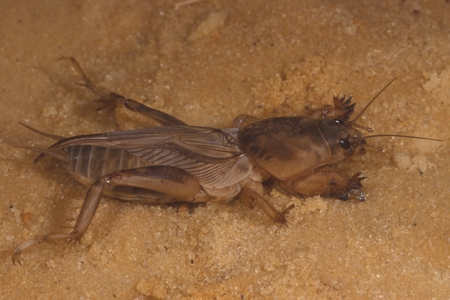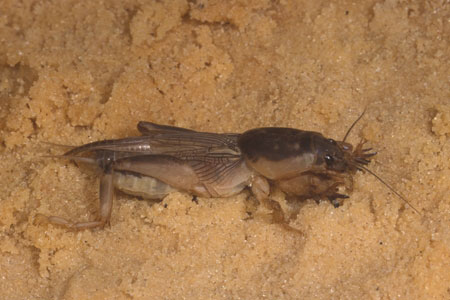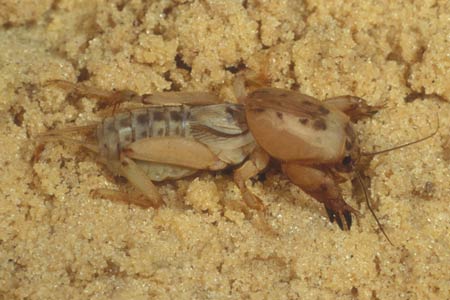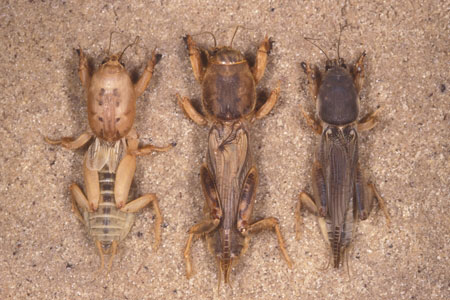Home » Bugs » Lawn Pests »
Active Seasons



Mole Cricket Size and Appearance Facts
Mole crickets get their name from their mole-like habits, spending most of their lives underground. While fascinating in their own right, these pests can pose significant challenges when it comes to maintaining well-manicured lawns and gardens since they burrow underground to live and raise their young.
Though you may never see a mole cricket, if you do stumble upon one, you’ll notice a few main characteristics:
- One to two inches long, a larger cricket species
- Thick bodies with beady eyes
- Brown or tan in color
- Strong, shovel-like front legs resembling the front limbs of moles
- Long, threadlike antennae
We provide pest control for mole crickets in the following locations and their surrounding areas:

Behavior and Habitat of Mole Crickets
Mole crickets’ behavior and habitat are difficult to discern since they live underground, digging long and extensive tunnels to hunt for food. On the rare occasion the mole cricket does leave the ground, they do so at night thanks to their nocturnal nature.

Signs of Infestation of Mole Crickets
If you suspect you have mole crickets in your lawn, look for some specific signs, including brown patches of dead grass, little mounds of dirt (made from burrowing), and small tunnels in your grass. Since mole crickets typically become active in the spring or summer, you may not notice the damage until the fall. A simple way to see if you have mole crickets is to mix dish soap with water and pour it on a patch of your lawn, which will bring the crickets to the surface.

Tips for Prevention of Mole Crickets
Proper lawn irrigation is the best step you can take toward controlling underground pests, including mole crickets. Overly moist soil and grass can attract mole crickets to your lawn, where they’ll quickly settle in and start feeding on your lawn.
Getting Rid of Mole Crickets
Since mole crickets live underground, getting rid of them can be incredibly difficult. Store-bought pesticides rarely provide relief, as they only work on the surface level. Additionally, trying to use pesticides yourself can lead to irreversible damage to your lawn. Instead of risking it, get professional pest control from Hulett.
Effective Mole Cricket Control Solutions
If you’re tired of mole crickets wreaking havoc on your lawn, get relief with the help of Hulett’s professional pest control services. We offer mole cricket control in Florida so you can keep your lawn lush and green. Our pest technicians are highly trained and can handle mole crickets and many other lawn pests. Check our Florida pest control service areas to see if we cover your home.
Take the first step toward reclaiming your lawn and schedule your free inspection today. We offer lawn pest control in Florida and services for several more pests. For more information on our top-notch pest control services, check out our FAQ. For more assistance, feel free to call us or fill out a contact form.




